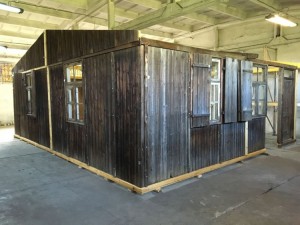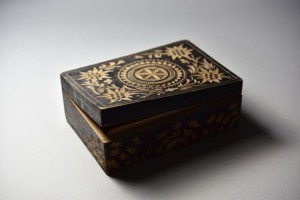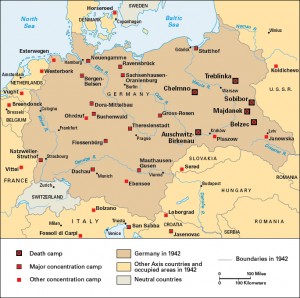Remembering Auschwitz
December 14, 2017
On December 1, in Madrid, Spain, an exhibition opened featuring artifacts and personal belongings of people imprisoned at the Auschwitz concentration camp run by Nazi Germany during World War II (1939-1945). Madrid’s Canal Art Centre is the first stop for the exhibition, called “Auschwitz: Not long ago. Not far away.” The exhibit runs in Madrid through June 2018, and it will rotate between world museums for the next seven years.

A barracks that held Auschwitz prisoners is among the items displayed in the traveling exhibit. Credit: © Musealia/Auschwitz-Birkenau State Museum
The Auschwitz complex—a group of three main camps and more than 40 smaller camps—was in the town of Oświęcim in German-occupied Poland. The Nazis used Auschwitz (the German name for Oświęcim) as a killing center, where prisoners were murdered, and as a center for forced labor. About 1 1/4 million people, mostly Jews, were killed at Auschwitz. Other victims included Poles, Roma (sometimes called Gypsies), and Soviet prisoners of war.

This wooden box on display was made by an Auschwitz prisoner. Credit: © Pawel Sawicki, Auschwitz-Birkenau State Museum
The traveling Auschwitz exhibit contains many objects from the Auschwitz-Birkenau State Museum near the Polish city of Kraków. Some 2 million people visit Auschwitz every year. The camp is included in the World Heritage List, an international registry of sites that have great natural or cultural value, as a symbol of the Holocaust. The more than 1,100 tour items also include objects from the United States Holocaust Memorial Museum in Washington, D.C., the World Holocaust Remembrance Center in Jerusalem, Israel, and other world centers and museums.

Click to view larger image
The Auschwitz complex was just one of many Nazi concentration camps. This map shows a fraction of the hundreds of camps throughout Europe. Credit: WORLD BOOK map
The traveling exhibition includes such items as children’s toys, eyeglasses, striped pajamas, and suitcases, as well as a gas mask, a tin that contained poisonous gas pellets, and other grim reminders of the killing that took place at Auschwitz. Artifacts on display are tightly secured at all times, and exhibition spaces meet strict requirements regarding proper transportation and storage and careful lighting and climate control. The items are also presented in historical context to remind the public of the circumstances that led to the rise of Nazi Germany and the atrocities of the Holocaust.


